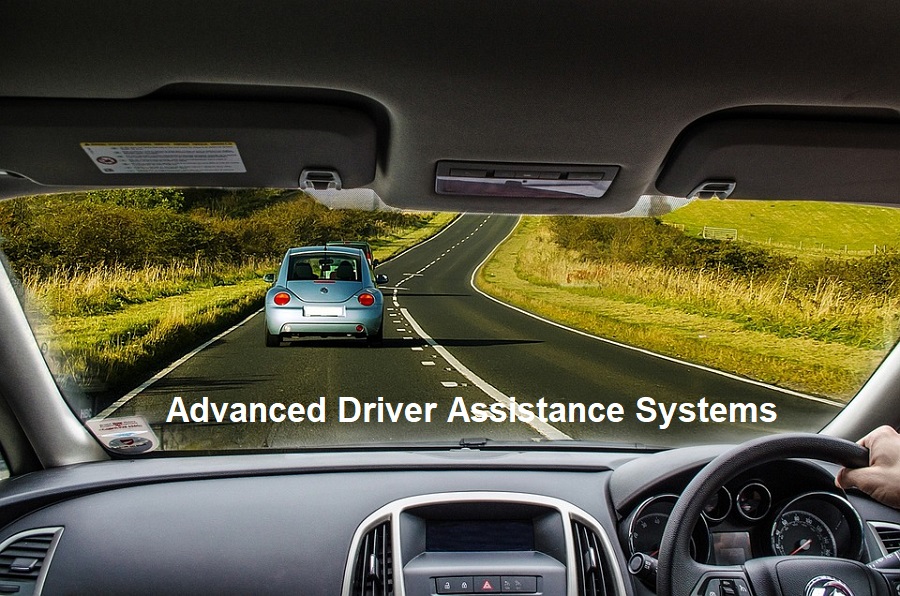Advanced Driver Assistance Systems (ADAS) technology is transforming the automotive industry by making driving safer and more comfortable. ADAS technology is a combination of software, hardware, and sensors that work together to enhance the safety of the driver and passengers. It assists the driver in different driving situations, such as lane departure, collision avoidance, and blind spot detection. ADAS technology is becoming increasingly popular, with many vehicles on the market today equipped with various ADAS features.
In this article, we will discuss ADAS technology in detail, including its history, how it works, its benefits and challenges, and the future of ADAS.
History of Advanced Driver Assistance Systems
The history of ADAS technology can be traced back to the 1950s when the first cruise control system was invented. It allowed drivers to set a constant speed, making long drives less tiring. In the 1990s, anti-lock braking systems (ABS) were introduced to prevent skidding and maintain control during hard braking. In the early 2000s, Electronic Stability Control (ESC) was developed to help prevent loss of control during sudden maneuvers. Since then, ADAS technology has evolved rapidly, and today, it includes a wide range of features that assist drivers in various driving scenarios.
Advanced Driver Assistance Systems (ADAS) have been in development for several decades, with early iterations dating back to the 1970s.
The following is a brief overview of the history of ADAS technology:
- The 1970s – The first ADAS systems were developed in the 1970s and included technologies such as anti-lock braking systems (ABS) and electronic stability control (ESC).
- The 1980s – In the 1980s, research into ADAS technology focused on developing collision avoidance systems, which used radar sensors to detect obstacles and warn the driver of potential collisions.
- The 1990s – In the 1990s, car manufacturers began incorporating more advanced ADAS systems into their vehicles, such as adaptive cruise control (ACC) and lane departure warning (LDW) systems.
- The 2000s – By the 2000s, ADAS technology had become more widespread, with features such as automatic emergency braking (AEB), blind spot detection (BSD), and rear cross-traffic alert (RCTA) becoming more common.
- The 2010s – In the 2010s, ADAS technology continued to advance rapidly, with the development of features such as traffic sign recognition, pedestrian detection, and driver monitoring systems.
- Today, ADAS technology is an essential component of modern vehicles, with most new cars equipped with several standard ADAS features. The ongoing development of ADAS technology is focused on improving safety, convenience, and efficiency, with the ultimate goal of creating fully autonomous vehicles.
How ADAS Technology Works
ADAS technology uses sensors, cameras, radar, and other devices to monitor the vehicle’s surroundings and provide feedback to the driver. The sensors and cameras are installed in different parts of the vehicle, such as the front and rear bumpers, mirrors, and windshields. The onboard computer processes the data from these sensors, which uses algorithms to analyze the information and determine if any action is required.
Some of the most common ADAS features include
- Lane Departure Warning (LDW) – This system uses cameras to monitor the vehicle’s position on the road and alerts the driver if they start to drift out of their lane.
- Automatic Emergency Braking (AEB) – AEB uses radar and cameras to detect potential collisions and automatically applies the brakes to avoid or mitigate the impact.
- Blind Spot Detection (BSD) – BSD uses radar sensors to monitor the vehicle’s blind spots and alerts the driver if there is a vehicle in their blind spot.
- Adaptive Cruise Control (ACC) – ACC uses radar to detect the distance between the vehicle and the vehicle in front of it and adjusts the speed accordingly to maintain a safe following distance.
- Parking Assistance – Parking assistance uses sensors and cameras to guide the driver into a parking spot.
Benefits of ADAS Technology
ADAS technology offers numerous benefits to drivers, passengers, and other road users. Some of the most significant advantages of ADAS technology include:
- Improved Safety – ADAS technology helps prevent accidents by providing drivers with warnings and assistance when driving conditions become hazardous. It can also automatically apply the brakes to avoid or mitigate collisions.
- Increased Comfort – ADAS technology can make driving more comfortable and less tiring by handling some of the driving tasks, such as maintaining a safe following distance or guiding the vehicle into a parking spot.
- Better Fuel Economy – ADAS technology can help drivers achieve better fuel economy by optimizing the vehicle’s speed and reducing unnecessary acceleration and braking.
- Reduced Insurance Costs – Insurance companies are starting to recognize the benefits of ADAS technology and offering discounts to drivers with vehicles equipped with ADAS features.
Challenges of ADAS Technology
Despite its many benefits, ADAS technology also presents several challenges that need to be addressed. Some of the most significant challenges include the following:
- Cost – ADAS technology can be expensive, making it less accessible to many drivers.
- Reliability – ADAS technology relies on sensors and other devices to function correctly, and these components can fail, leading to malfunctions or false alarms.
- User Misunderstanding – Some drivers may not fully understand how to use ADAS technology, leading to confusion or misuse.
- Cybersecurity Risks – ADAS technology relies heavily on software and internet connectivity, making it vulnerable to cybersecurity threats.
- Legal and Ethical Issues – As ADAS technology becomes more prevalent, questions arise about liability in the event of an accident involving a vehicle equipped with ADAS features.
The Future of ADAS Technology
The future of ADAS technology is bright, with continuous advancements and improvements expected in the coming years. Some of the most significant developments expected in ADAS technology include:
- Improved Sensors – Sensor technology is rapidly evolving, with advancements in LiDAR, radar, and camera technology expected to make ADAS systems even more reliable and accurate.
- Vehicle-to-Vehicle Communication – Vehicle-to-vehicle communication will allow vehicles to exchange data about their location, speed, and other information, improving safety and reducing accidents.
- Artificial Intelligence – AI is expected to play a significant role in developing ADAS technology, with AI algorithms providing even more accurate and efficient detection and response to driving scenarios.
- Autonomous Driving – Autonomous driving is the ultimate goal of ADAS technology, with fully self-driving cars expected to become a reality in the coming decades.
Examples of Advanced Driver Assistance Systems
There are numerous examples of Advanced Driver Assistance Systems (ADAS) in cars, and these systems are becoming increasingly common in modern vehicles. Here are some of the most common examples of ADAS features:
- Adaptive Cruise Control (ACC) – This system uses sensors to detect the distance between the vehicle and the vehicle in front of it and adjusts the speed accordingly to maintain a safe following distance.
- Lane Departure Warning (LDW) – This system uses cameras to monitor the vehicle’s position on the road and alerts the driver if they start to drift out of their lane.
- Automatic Emergency Braking (AEB) – AEB uses radar and cameras to detect potential collisions and automatically applies the brakes to avoid or mitigate the impact.
- Blind Spot Detection (BSD) – BSD uses radar sensors to monitor the vehicle’s blind spots and alerts the driver if a vehicle is in its blind spot.
- Rear Cross-Traffic Alert (RCTA) – This system uses sensors to detect approaching vehicles or objects when reversing out of a parking space and alerts the driver.
- Forward Collision Warning (FCW) – FCW uses sensors to detect potential collisions with the vehicle in front and warns the driver to take action.
- Parking Assistance – Parking assistance uses sensors and cameras to guide the driver into a parking spot.
- Traffic Sign Recognition – This system uses cameras to recognize and display road signs on the vehicle’s dashboard, such as speed limit signs.
- Adaptive Headlights – These headlights adjust their brightness and direction according to the driving conditions, improving visibility and reducing glare for other drivers.
- Driver Monitoring System – This system uses cameras to monitor the driver’s behavior and alertness and warns if the driver appears drowsy or distracted.
Conclusion:
ADAS technology is transforming the automotive industry by making driving safer, more comfortable, and more efficient. Technology has come a long way since its early days, and today, it offers a wide range of features that assist drivers in different driving scenarios. While ADAS technology offers numerous benefits, it also presents challenges like cost, reliability, and cybersecurity risks. However, the future of ADAS technology is bright, with continuous advancements and improvements expected in the coming years paving the way for fully autonomous vehicles.



